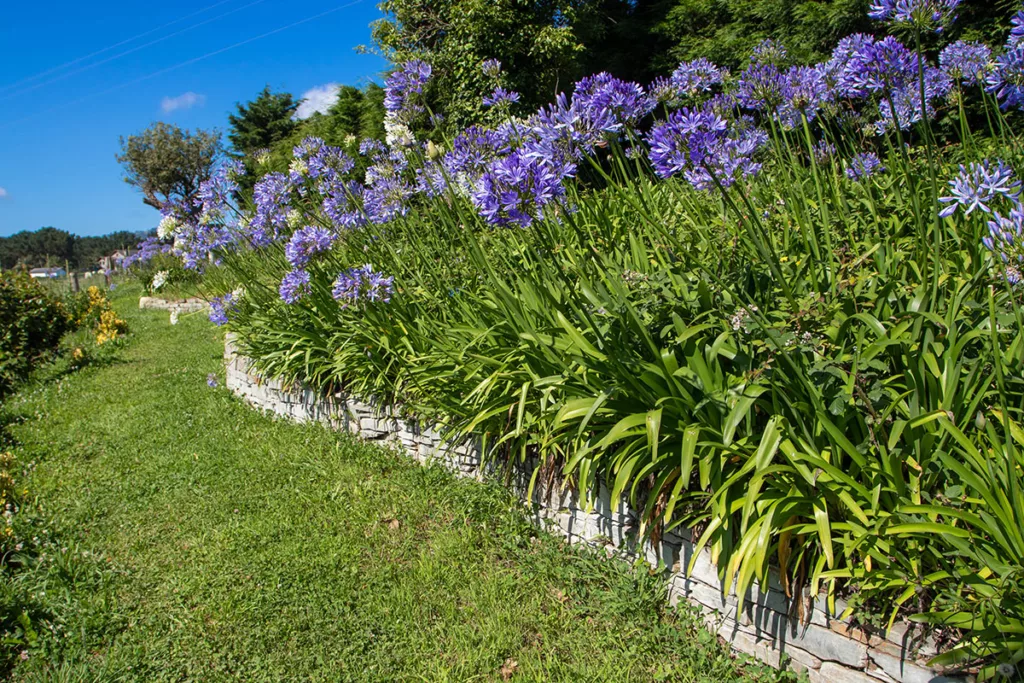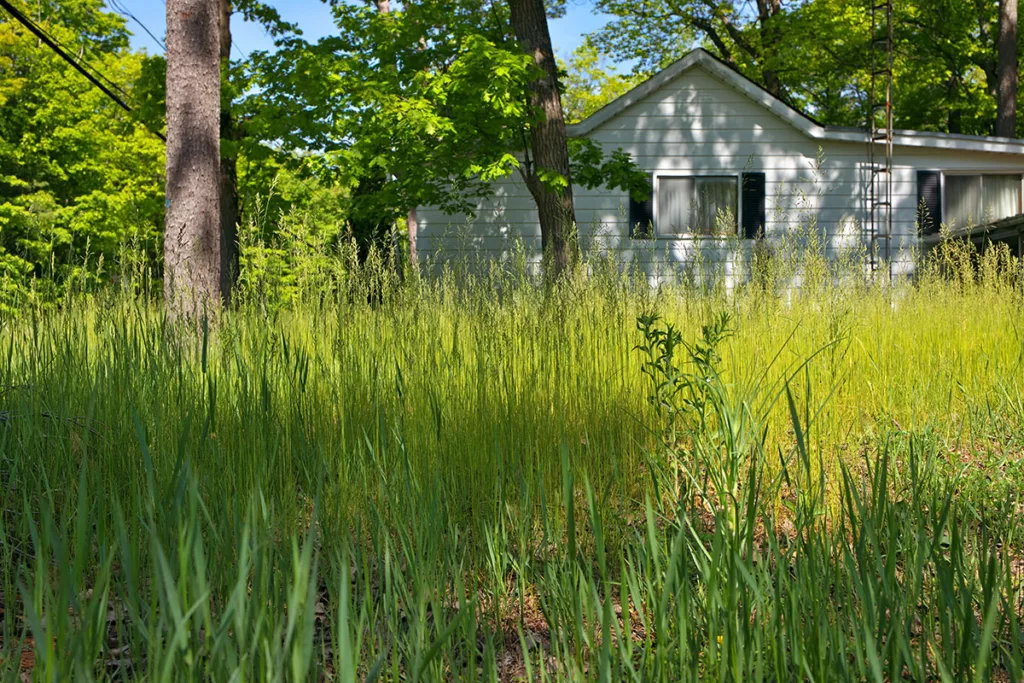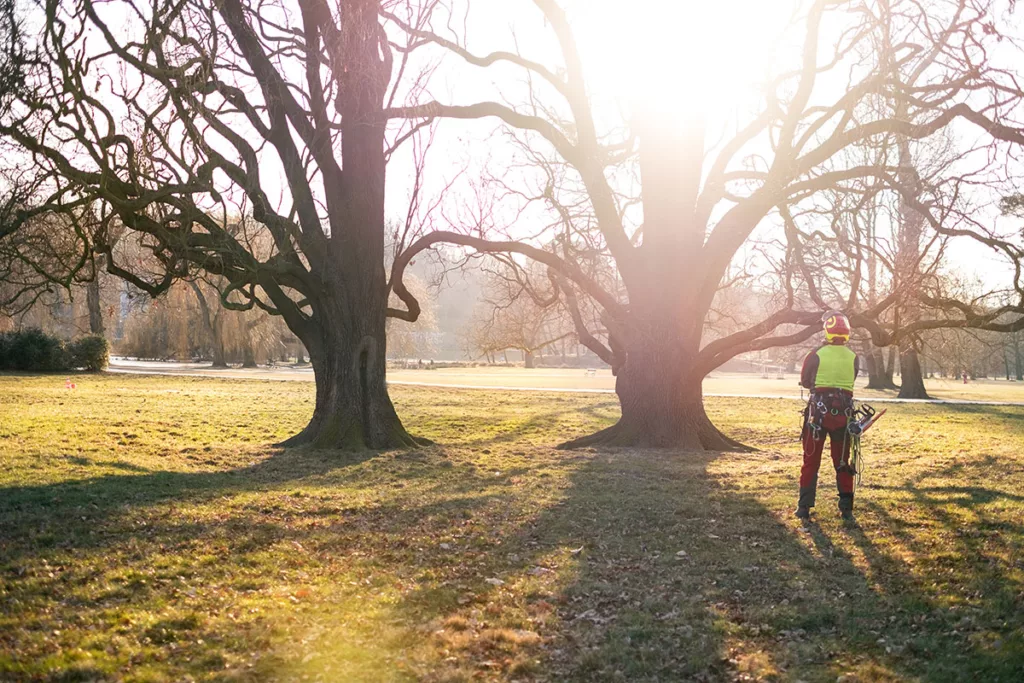In an area like Sonoma County, where wildfires have become increasingly common and devastating, maintaining a defensible space around your property is no longer an option; it’s a necessity. With proactive measures and a commitment to proper tree care and vegetation management, you can minimize the impact of potential wildfires on your home and our community as a whole. In this guide, we’ll walk you through ways to reduce fire fuels on your property to help keep your home and land safe from the destructive effects of wildfires.
What Is Defensible Space?
According to CalFire, defensible space is the distance you establish between your home and other structures on your property and the surrounding grass, trees, shrubs, and other vegetation. This distance will serve as a buffer that can slow or stop the progression of a potential wildfire and provide safe spaces for firefighters to defend your home from damage. When created and maintained properly, a defensible space can greatly reduce the vulnerability of your house to approaching flames, intense heat, and embers.
How to Maintain a Wildfire Defensible Space by Reducing Fire Fuels Around Your Home
At Vintage Tree Care, our goal is to empower you with knowledge, so you can make informed decisions about your property’s fire resilience. Together, we can make a significant impact in creating a safer, more wildfire-resistant environment for all Sonoma County families.
From strategic landscaping choices to responsible tree care, read on to learn some of the many ways to reduce fire fuels around your home and maintain a wildfire defensible space.
1. Check for Defensible Space Zone Violations
Defending your property against wildfire is virtually impossible without maintaining defensible space zones. CalFire has defined defensible space zones to help California reduce the fire fuel around their properties for increased fire safety. Checking for defensible space zone violations can level up your fire defense strategy and make your property safer:
- Zone 0: A parameter of five feet around your home (or any structure on your property including decks and porches) should remain clear of any flammable material of any kind. This includes any organic vegetation like plants, shrubs, or piles of firewood, as well as inorganic items such as garbage cans, wood fencing, and even vehicles.
- Zone 1: Manage all vegetation within 30 feet of any structures on your property by removing dead plants, regularly trimming trees, and maintaining space between trees and shrubs.
- Zone 2: California law (Public Resources Code (PRC) 4291) requires property owners to reduce potential fire fuels within 100 feet (or up to your property line) of any structures on their land. Keep grass at a maximum height of four inches, remove any dry or dead vegetation, regularly trim low-hanging tree branches, and incorporate fuel breaks as often as possible.
2. Landscape with Fire-Resistant Plants

Designing landscapes with fire-resistant plants is a beautiful and practical strategy for creating a defensible space around your home. When designing a landscape with fire-resistant plants, look for plants with high moisture content. These are less likely to ignite and spread fire. Plants with low flammability might also have thick, waxy, or leathery leaves.
Here are some fire-resistant plants you can incorporate into your firescaping strategy to reduce the fire fuels around your home:
- Coast live oak trees
- American Mountain Ash tree
- Chinese Pistache tree
- Succulents and cacti
- Yarrow
- Beech tree
- Lily of the Nile
- Coral bells
- Buckwheat
- Wooly bluecurls
- Manzanita
3. Remove Debris from Gutters, Roof, and Yard
Removing debris from your gutters, roof, and yard can decrease the amount of fire fuel on your property significantly. This is because accumulated debris like dead or dry leaves and sticks are naturally highly flammable and will pose a significant risk to your home in the event of a wildfire.
Removing as much organic litter as possible from around your property is an essential part of maintaining a defensible space and can slow the spread of a fire.
4. Remove Hazardous Vegetation

A key part of any fuel reduction strategy is year-round vegetation management. Vegetation can either act as a natural barrier against fires or serve as a potent fuel source, depending on how it’s managed. This is especially true in Sonoma County, where we have lots of dry vegetation that becomes a fire risk when overgrown.
You should regularly pull weeds, trim overgrown vegetation, and mow back tall grass. Addressing hazardous or dead trees is also a vital step in fuel management. Professional services like tree removal can decrease the amount of fuel on your property, which lowers your wildfire vulnerability.
5. Designate Fuel Breaks Throughout Property
A fuel break is an area of land that doesn’t have any vegetation growing on it that could act as fire fuel. This helps to naturally stop the spread of fire. You can create fuel breaks by mowing or thinning strips of at-risk vegetation, or by landscaping with non flammable things such as gravel or water features.
You can also create natural fuel breaks by maintaining proper horizontal spacing between shrubs and trees on your property. The spread of wildfire can be effectively slowed if a safe amount of space is maintained between all the vegetation on your property. To determine optimal horizontal spacing to create an effective fuel break, you’ll need to consider shrub height and land slope:
- Flat land: Trees need to be 10 feet apart, and shrubs should be distanced a space 2Xs their height away from other vegetation.
- Moderate slopes: Trees need to be 20 feet apart, and shrubs should be distanced a space 4Xs their height away from other vegetation.
- Steep slopes: Trees need to be 30 feet apart, and shrubs should be distanced a space 6Xs their height away from other vegetation.
6. Prune Trees Regularly
Pruning trees regularly helps to keep trees healthy and strong, reducing the risk of possible disease or pests. Keeping the trees on your property healthy is one of the best ways to ensure they don’t increase the fire fuels on your property. Regularly pruning also reduces potential ladder fuels that would otherwise allow flames from a low-burning fire to climb higher into the tree canopy and spread faster. Here are some other types of ladder fuels to look out for:
- Shrubs
- Tall grass
- Low-hanging branches
- And more
Another key part of pruning for fire fuel reduction is vertical spacing. All tree limbs should be a minimum of 6 feet above the ground to avoid catching fire. Having your trees professionally pruned by experts will help reduce ladder fuels and keep your trees healthy.
Maintain a Defensible Space Around Your Home with Personalized Tree Care
Reducing the amount of fire fuel around your home is an essential part of defending your property against the rising risk of wildfires. Our TRAQ and ISA certified arborists have over 25 years of experience providing personalized tree care services to Sonoma County home and business owners. As tree care professionals, we have the expertise required to keep your trees healthy and help you defend against wildfires.
For more information or to receive an estimate, please call us at 707- 495-4686 or contact us online today.


